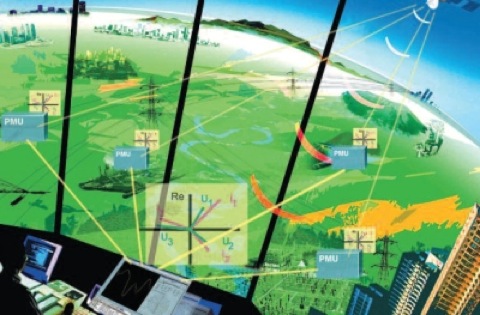Key words :
google
,
future energies,
united states
,energy efficiency
,smart grid
,ge
,ibm
,smart meters
,electricity
,energy
Smart Grid: On its way?slowly
29 Oct, 2009 11:11 am
Yesterday, President Obama travelled to Arcadia, Florida, home to one of the nation?s biggest solar power plants, to announce 100 grants providing a total of $3.4 billion in recovery-act funding for the smart grid. The federal money will unleash $4.1 billion of private investment that, according to the government, that will bring smart meters to about 18 million American homes, or 13% of homes. It?s a big deal.
 |
The trouble is, layering intelligence and transparency into the electricity grid requires action by two of the slowest-moving entities in all of America–the federal government and the regulated utilities. So you can be certain this won’t be an overnight transformation.
In fact–irony of ironies–the news that Uncle Sam was going to be subsidizing smart-grid rollouts has inadvertently slowed down the process, albeit temporarily. About 570 applications were filed seeking a total of $14 billion in grants. While waiting to see who got the grants and who didn’t, some utilities put their plans on hold.
Last night, Carol Browner, the White House climate czar, Jared Bernstein, an economic advisor to Vice President Joe Biden and Matt Rogers, a senior advisor to Energy Secretary Chu and brainy alum of McKinsey & Co., held a conference call to talk about the smart-grid grants. Browner and Bernstein said spending stimulus money on smart grid projects would “create or save” tens of thousands of jobs, and enable the growth of domestic renewable energy—claims that may well be true but weren’t backed up with either data or logic. Of course, giving the electricity industry billions in subsidies will help create or save jobs; the more important question is how many of those jobs would have been saved or created anyway had the government chosen to sit on the sidelines.
The DOE won’t release a list of all the grant recipients until today, but Rogers offered these examples on the media call. They went by in a hurry so don’t hold me to every specific:
Baltimore Gas & Electric will get a $200 million grant, to be matched with $251 million from the utility, to deploy 1.1 million smart meters. They will include displays in customers’ homes showing real-time energy use, which will be accompanied by time-of-day pricing. That’s key to enabling people to shift their discretionary energy consumption away from times of peak demands. That, in turn, will smooth out peaks in the demand curve, reducing the need for additional, costly power generation.
Cobb Electric Membership Corp., based in Marietta, Georgia, will get a $16.9 million grant, to be matched by the nonprofit cooperative, to deploy 190,000 across its network, to all of its customers. Deployments like this one should help determine whether the smart grid can deliver on its promises.
San Diego Gas & Electric will get a $21 million grant, matched by $31 million from the utility, to deploy an advanced wireless communications project, making it possible for two-way data exchange between customers and the utility. SDG&E is working with a variety of partners, including GE, Cisco and Google; it’s one of eight utilities in the U.S., India and Canada that is enabling customers to access their daily energy use online by using Google’s PowerMeter.While all of this activity will speed up deployment of the smart grid, most consumers will have to wait some time before the glories of the smart grid are revealed. One problem will be breaking utility companies of old habits–in many states, the more more power they sell, the more money they make–so conservation is not in their economic interests. For another, deployment of the smart grid depends upon a patchwork of state regulatory schemes. (To learn more, read this excellent overview from ClimateWire on The New York Times website.)
But a lot of smart and powerful companies are pushing hard for the smart grid, so it’s on its way. You can see what GE is up to here, you can read Google’s view here, you can see what IBM is doing here. Just yesterday, I visited Best Buy, where key execs told me they think that networking the smart home to communicate with the smart grid will become a good business for them.
Originally published on MarcGunther.com
Further reading:
- GE & Google say: Get Smart
Key words : google
,
future energies,
united states
,energy efficiency
,smart grid
,ge
,ibm
,smart meters
,electricity
,energy
-
12/12/12
“Peak Oil” is Nonsense… Because There’s Enough Gas to Last 250 Years.
-
05/09/12
Threat of Population Surge to "10 Billion" Espoused in London Theatre.
-
05/09/12
Current Commentary: Energy from Nuclear Fusion – Realities, Prospects and Fantasies?
-
04/05/12
The Oil Industry's Deceitful Promise of American Energy Independence
-
14/02/12
Shaky Foundations for Offshore Wind Farms







See:
http://notionscapital.wordpress.com/2009/10/24/terrorists-strike-u-s-infrastructure/